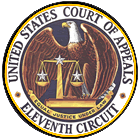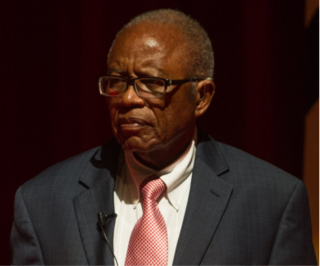Regents of the University of California v. Bakke, 438 U.S. 265 (1978) involved a dispute of whether preferential treatment for minorities can reduce educational opportunities for whites without violating the Constitution. The case was a landmark decision by the Supreme Court of the United States. It upheld affirmative action, allowing race to be one of several factors in college admission policy. However, the court ruled that specific racial quotas, such as the 16 out of 100 seats set aside for minority students by the University of California, Davis School of Medicine, were impermissible.

Proposition 209 is a California ballot proposition which, upon approval in November 1996, amended the state constitution to prohibit state governmental institutions from considering race, sex, or ethnicity, specifically in the areas of public employment, public contracting, and public education. Modeled on the Civil Rights Act of 1964, the California Civil Rights Initiative was authored by two California academics, Glynn Custred and Tom Wood. It was the first electoral test of affirmative action policies in North America. It passed with 55% in favor to 45% opposed.

Alabama State University is a public historically black university in Montgomery, Alabama. Founded in 1867, ASU is a member-school of the Thurgood Marshall College Fund.
The Nonintercourse Act is the collective name given to six statutes passed by the Congress in 1790, 1793, 1796, 1799, 1802, and 1834 to set Amerindian boundaries of reservations. The various Acts were also intended to regulate commerce between settlers and the natives. The most notable provisions of the Act regulate the inalienability of aboriginal title in the United States, a continuing source of litigation for almost 200 years. The prohibition on purchases of Indian lands without the approval of the federal government has its origins in the Royal Proclamation of 1763 and the Confederation Congress Proclamation of 1783.
DeFunis v. Odegaard, 416 U.S. 312 (1974), was a United States Supreme Court case in which the Court held that the case had become moot and so declined to render a decision on the merits. American student Marco DeFunis, who had been denied admission to the University of Washington School of Law in the state of Washington before he was provisionally admitted during the pendency of the case, was slated to graduate within a few months of the decision being rendered.

Frank Minis Johnson Jr. was a United States district judge and United States Circuit Judge serving 1955 to 1999 on the United States District Court for the Middle District of Alabama, United States Court of Appeals for the Fifth Circuit and United States Court of Appeals for the Eleventh Circuit. He made landmark civil rights rulings that helped end segregation and disenfranchisement of African Americans in the South. In the words of journalist and historian Bill Moyers, Judge Johnson "altered forever the face of the South."

Glassroth v. Moore, 335 F.3d 1282, and its companion case Maddox and Howard v. Moore, 229 F. Supp. 2d 1290, is a decision from the United States Court of Appeals for the Eleventh Circuit that held a 21⁄2 ton granite monument of the Ten Commandments placed in the rotunda of the Heflin-Torbert Judicial Building in Montgomery, Alabama by then-Alabama Supreme Court Chief Justice Roy Moore was a violation of the Establishment Clause of the First Amendment.
Browder v. Gayle, 142 F. Supp. 707 (1956), was a case heard before a three-judge panel of the United States District Court for the Middle District of Alabama on Montgomery and Alabama state bus segregation laws. The panel consisted of Middle District of Alabama Judge Frank Minis Johnson, Northern District of Alabama Judge Seybourn Harris Lynne, and Fifth Circuit Court of Appeals Judge Richard Rives. The main plaintiffs in the case were Aurelia Browder, Claudette Colvin, Susie McDonald, and Mary Louise Smith. Jeanetta Reese had originally been a plaintiff in the case, but intimidation by segregationists caused her to withdraw in February. She falsely claimed she had not agreed to the lawsuit, which led to an unsuccessful attempt to disbar Fred Gray for supposedly improperly representing her.

Hopwood v. Texas, 78 F.3d 932, was the first successful legal challenge to a university's affirmative action policy in student admissions since Regents of the University of California v. Bakke. In Hopwood, four white plaintiffs who had been rejected from University of Texas at Austin's School of Law challenged the institution's admissions policy on equal protection grounds and prevailed. After seven years as a precedent in the U.S. Court of Appeals for the Fifth Circuit, the Hopwood decision was abrogated by the U.S. Supreme Court in 2003.

Fred David Gray is an American civil rights attorney, preacher, and activist from Alabama. He litigated several major civil rights cases in Alabama, including some, such as Browder v. Gayle, that reached the United States Supreme Court. He served as the president of the National Bar Association in 1985, and in 2001 was elected as the first African-American President of the Alabama State Bar.
The University of Texas School of Law is the law school of the University of Texas at Austin. Texas Law is consistently ranked as one of the top law schools in the United States and is highly selective—registering the 8th lowest acceptance rate among all U.S. law schools for the class of 2022—with an acceptance rate of 17.5%. According to Texas Law’s 2019 disclosures, 90 percent of the Class of 2019 obtained full-time, long-term bar passage required/JD advantage employment nine months after graduation.

{{multiple issues

Affirmative action in the United States is a set of laws, policies, guidelines, and administrative practices "intended to end and correct the effects of a specific form of discrimination" that include government-mandated, government-approved, and voluntary private programs. The programs tend to focus on access to education and employment, granting special consideration to historically excluded groups, specifically racial minorities or women. The impetus toward affirmative action is redressing the disadvantages associated with past and present discrimination. Further impetus is a desire to ensure public institutions, such as universities, hospitals, and police forces, are more representative of the populations they serve.

Johnnie Rebecca Daniels Carr was a leader in the Civil Rights Movement in the United States from 1955 until her death.
Jessie Tompkins is a US athlete and educator from Bessemer, Alabama. Jesse Tompkins attended and ran track for the University of South Alabama in Mobile, Alabama and later graduated from Bishop State Community College in Mobile, Alabama and the United States Sports Academy in Daphne, Alabama and later from Alabama State University in Montgomery.

Georgia Teresa Gilmore was an African-American woman from Montgomery, Alabama, who participated in the Montgomery bus boycott through her fund-raising organization, the Club from Nowhere, which sold food at Montgomery Improvement Association (MIA) mass meetings. Her grass-roots activism helped sustain the 382-day boycott and inspired similar groups to begin raising money for the boycott.
Fisher v. University of Texas, 570 U.S. 297 (2013), also known as Fisher I, is a United States Supreme Court case concerning the affirmative action admissions policy of the University of Texas at Austin. The Supreme Court voided the lower appellate court's ruling in favor of the university and remanded the case, holding that the lower court had not applied the standard of strict scrutiny, articulated in Grutter v. Bollinger (2003) and Regents of the University of California v. Bakke (1978), to its admissions program. The Court's ruling in Fisher took Grutter and Bakke as given and did not directly revisit the constitutionality of using race as a factor in college admissions.
Schuette v. Coalition to Defend Affirmative Action, 572 U.S. 291 (2014), was a landmark decision of the Supreme Court of the United States concerning affirmative action and race- and sex-based discrimination in public university admissions. In a 6-2 decision, the Court held that the Fourteenth Amendment's Equal Protection Clause does not prevent states from enacting bans on affirmative action in education.
Students for Fair Admissions, Inc. v. President and Fellows of Harvard College and Students for Fair Admissions, Inc. v. University of North Carolina are a pair of lawsuits concerning racial discrimination in affirmative action programs in college admissions processes. The first case involves Harvard University's undergraduate admissions process which is claimed to discriminate against Asian American applicants, while the second centers on the University of North Carolina's use of socioeconomic factors in administration, which is claimed to incorporate race and violate Title VI of the Civil Rights Act of 1964. Both cases seek review of the Supreme Court decision Grutter v. Bollinger (2003) which validated the use of affirmative action programs in college admissions as long as race is not used as the sole deciding factor.
Fisher v. University of Texas, 579 U.S. 365 (2016) is a United States Supreme Court case which held that the Court of Appeals for the Fifth Circuit correctly found that the University of Texas at Austin's undergraduate admissions policy survived strict scrutiny, in accordance with Fisher v. University of Texas (2013), which ruled that strict scrutiny should be applied to determine the constitutionality of the University's race-conscious admissions policy.












